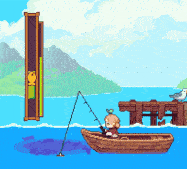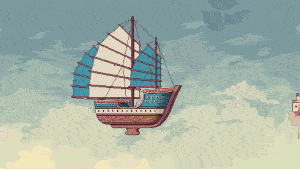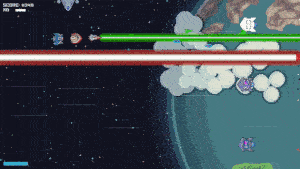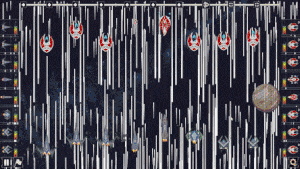Post-Mortem for Lazy Galaxy: trying to take a critical look
April 12, 2018If we assume that Post-Mortem is written when the game has died, then I don’t consider our game dead yet. 🙂 Our game, Lazy Galaxy, went into Full Release from Early Access on March 22nd. 3 weeks after, it’s a good time to sum up the development process, what we’ve learned and what’s going to happen next.
If you have games that sold 5000+ copies, I don’t think you’ll learn much from this post-mortem. For others: I’ll describe some points that I don’t see touched in other post-mortems. We’re a small game development studio in Latvia, treat it as our perspective on things.

First, about the game:
Lazy Galaxy is a mix between classical incremental game and real-time strategy game. You build your base in clicker mode, but fight battles in a tactical strategy mode. The idea is that your ships can fight by themselves, but in the beginning of the game it’s much more effective to micro-control them. Of course, the longer you play, the more automated process becomes.
Steam page here: http://store.steampowered.com/app/724470/Lazy_Galaxy/
We’ve started developing the game with two of us, with another programmer joining the team close to the early access release.
Quick Data at the current moment:
- Can’t disclose sales due to NDA, but you can check steamspy (http://steamspy.com/app/724470 )
- Approximately 50% breakeven
- Current median time played is 6+ hours (current number, was much higher during early access). >10% of players played more than 40 hours. ~5% of players played more than 100 hours.
- 58 people on discord, around 15-20% of them are active
What went right:
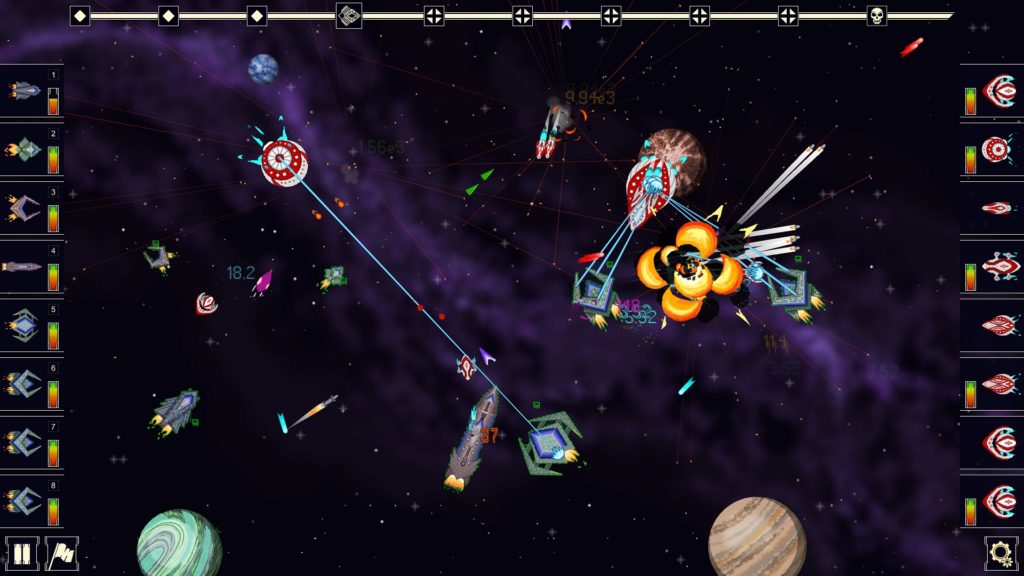
* Prototyping – took some time to find the right formula, but it ended up pretty good.
* The game idea – it turned out well. The game was genuinely fun to play for us as we kept developing it.
* Early access: it really helped building the audience and introducing the features that players wanted.
* Player engagement. Most devoted players had ~600-700 hours played. Some people played 200+ hours, it’s not that rare.
* Discord: it’s a great tool to talk to community. Use it. Grow it.
What went wrong:
* The palette choice could be better. I’m very happy with the art, but the gamma turned out a bit dull.
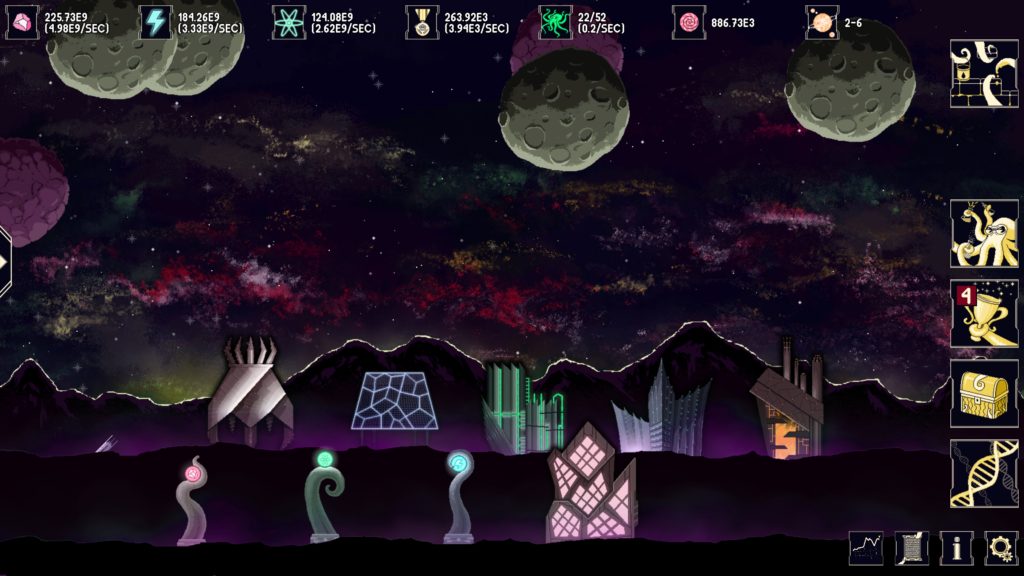
* UI is a bit clumsy. We’ve spent three weeks working on tutorial, but it did not help much in the end.
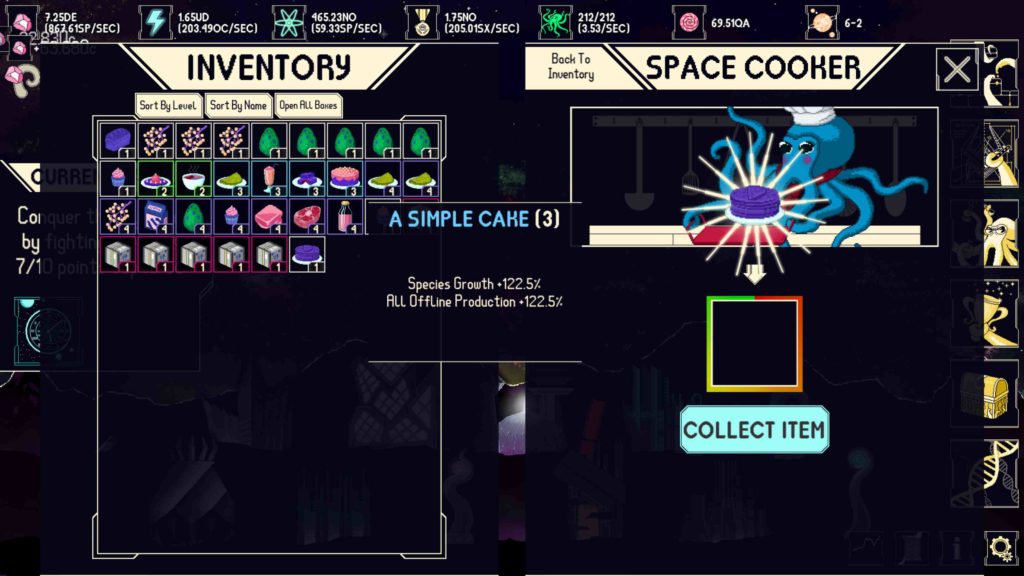
* Monetisation model: people just expect incremental games to be free. I still think it was the right decision when it comes to game design: I was able to afford better art and we did not put artificial slow-downs that would motivate the purchase of premium currency, but business-wise it was not smart.
* Apart from regularly posting devlogs for the game, I’ve devoted my 2 full-time weeks before release into marketing the game: it was not enough. I’d say take a full month if you are serious about it.
Now, my own “revelations:”
On Indiepocalypse
The mentions of indiepocalypse are popular and not entirely unreasonable. The market did change.
Lazy Galaxy made me think that a good game will get noticed. It’s our third self-published game and its results are different from the previous two. We’re not there yet (see what went wrong above), but the game seriously showed me that the niche audience found it, gave it a go, and enjoyed it enough to join discord and engage in communication with me. When it comes to digital presence: there are no borders anymore, nobody cares who you are and where are you from as long as you make an interesting game. For a guy from a small country with few indie games, it’s reassuring.
In the end, approach making a game like you would approach a business venture. There’s no magic here: know how you are going to market the game before you start making it. Know your competition, who succeeded and who failed. Leave space for art, but apply calculations before you start. If you want to make a living, you don’t have to invent crazy-lootbox-microtransaction-dlc-hidden-casino-scheme to succeed, but you need to be reasonable and focus only on those creative ideas that you think will be more financially successful. It does not mean killing your creative side, it means only giving a go to ideas that are both creative and potentially successful.
1) Have appealing aesthetics
2) Have solid gameplay to back it up
3) Tell the world. Every game marketing campaign should have a good game at its base.
On Mod Support
Took us three weeks to introduce mod support. In our case, it was worth it (there are 10 game mods in workshop at the moment). I’m an avid supporter of modding, but still consider it as a huge risks. I’d say normally go for mod support when you have 2000+ copies sold, otherwise it might not pay off:
– if you workshop feels empty, it gives a vibe that no one is playing your game
– you spend a lot of time to program it and write the guide. Again, if no one uses it and nobody does anything – you’ve wasted your time. Realistically, less than 20% of your players are going to use mods. I think it’s safe to say that less than 2% of your users is going to make mods. In Lazy Galaxy, we had maybe 5 people trying to make mods.
On Early Access
It worked for us because the game offered a lot of content. I think Early Access mostly fits games with replayability. Don’t do it with the plot-based games. Pit People is the only successful exception that comes to mind.
On Marketing
Youtubers were much more receptive towards it compared to our previous games. The bigger press sites pretty much ignored my press-release, but we got featured by a few smaller outlets, which felt good. Again,
I have a love-hate relationship with marketing. When I started developing games, I looked at it like a chore. Lazy Galaxy felt different: we were in love with the game and I did not feel like I’m pushing the product. It felt like I’m telling friends about that awesome game I’ve recently found and want them to try it.
Another important thing is the attitude towards social networks: most of us think it’s a chore, but I disagree to it now. Twitter is great when you don’t follow the devs simply for the purpose to be followed back. The successful formula for me was to follow only those people who I am curious about. I’ve removed about two hundred people from my following list and it became much more pleasant experience. This naturally created an opportunities for dialogue / communication. Post some of your things occasionally and comment on the things that others do. When you follow the right people – it just comes naturally.
For Facebook: videos get more engagements than text. I had a youtube channel with devlogs, but I’ve reuploaded videos to Facebook and it helped engagement/views.
The main advice: stick to the platforms that you can regularly update / participate in. No point in having your website / tumblr / facebook / twitter / etc if you are not going to update them in a timely manner. If you are one man team: pick one and try to post at least once per week. I’ve actually scrapped our website at one point because I was not able to update it in a timely matter (the last news were from Jan 2017, pretty insane to look back).
What’s next?
There will be a few more minor patches for Lazy Galaxy. In the end – the project left me hopeful and I can see that it’s possible to succeed if you work hard. Every game you make should be a stepping stone towards the next one – save all the contacts / reviews / emails and let your fans know that something new is coming!
As for us – we’ll either work on our own small project or will look for a freelance job as a team. If you need a 2d game made – I have a full team that can do anything (we’ve done commissioned work before) 🙂 E-mail me at contact at coldwild dot com if you want to find out more.
Additionally, you can follow us on our twitter account: https://twitter.com/ColdwildGames
